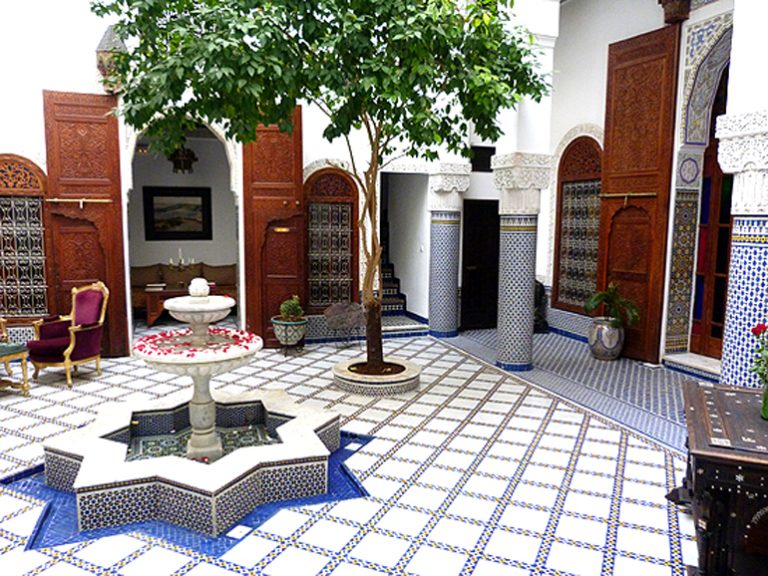Stress levels, anxiety, and depression have been on the rise in recent years due to factors such as the COVID-19 (Coronavirus Disease 2019) pandemic, travel restrictions, and constant policy changes. Scientists from Malaysia and Australia set out to tackle the question of how architecture could be optimized for the betterment of mental health.
According to a review article published in the Environment-Behavior Proceedings Journal in June, the Attention Restoration Theory (ART), first developed by Stephen and Rachel Kaplan in the late 1980s, posits that mental health can be improved by “time spent in or looking at natural elements such as green or blue space.”
The authors state that while the link between green spaces and mental health has been explored extensively, fewer studies have looked into blue spaces.
Blue space refers to “water elements in a space, creating a therapeutic effect on human emotions and physiology,” as evidenced by 2015 research showing time spent affects restorative outcomes, and 2019 research showing living within 5 km of the coast “improves general mental health.”
However, what other characteristics of blue space are associated with mental health?
Variables associated with wellbeing
Success
You are now signed up for our newsletter
Success
Check your email to complete sign up
The authors of the 2022 study conducted a comprehensive literature search regarding “variables affecting blue space’s ability to heal.” After a thorough process of identifying, screening, and analyzing 10,770 papers from multiple databases, 21 studies were included in the final review.
A total of 12 indoor blue space variables were found to affect mental wellbeing, split into “Category A” variables that are directly associated with restorative water outcomes and “Category B” variables that are indirectly related due to their indoor context.
Category A variables directly associated with water:
- Size of blue space
- Type of blue space
- Color and clarity of blue space
- Time spent in space in blue space
- Dynamic textures of water
- Perceived biodiversity of blue space
Category B variables indirectly associated with water:
- Use of space
- Ceiling height of space
- Arrangement of scenes
- Illumination of space
- Proportion of space
- Geometry of space
Some specific findings from the analyzed studies include how health outcomes are likely most significant when green or blue space is “43 percent and above in relation to the local area.”
The perception of blue space is an important consideration for therapeutic potential, as “muddy brown or yellow water has less restorative potential,” and green can sometimes be associated with thoughts of “foreboding, flood risk, or fear of drowning.”
In addition, at least 120 minutes per week in nature was associated with better health and wellbeing.
The characteristics of indoor spaces were also important, such as how “high ceilings inspire freedom, and low ceilings calm. High ceilings generate greater creativity and feelings of comfort.”
Additionally, the nine-square pattern or the golden section, also known as the golden ratio in mathematics, were preferred over other designs.
Water’s restorative effects
Several studies since the 1970s have shown the high value of water and blue spaces through the “relationship between proximity to water and property values,” according to a review article published in 2011 by two German scientists.
Urban planners often incorporate this knowledge by including water bodies in city designs, exploiting the fact that water features can provide immediate value as compared to green areas, which “need time to mature.”
The authors tout the benefits of blue spaces, which have “stress-reducing, mood-enhancing powers, expanding mental attention and mood.”
In particular, water provides opportunities for a variety of restorative activities, classified into four major categories:
- Kinetic recreational experiences that include higher degrees of motion, such as boating, sailing, and canoeing
- Situation-based recreational experiences refer to single locations such as pools or hiking locations that are visited multiple times
- Harvest experiences include activities such as fishing
- Contemplative or aesthetic experiences explore blue spaces passively through views or sounds.
By incorporating the above variables into building and room designs, architects can utilize blue space theory to improve the mental wellbeing and overall experience of residents. Future research can build on these findings, further exploring the manipulation of variables for maximum benefit.
For example, electroencephalogram (EEG) devices can be used to monitor brain waves and objectively evaluate wellbeing when people are immersed in blue spaces with different sizes, colors, and textures for a certain amount of time.















